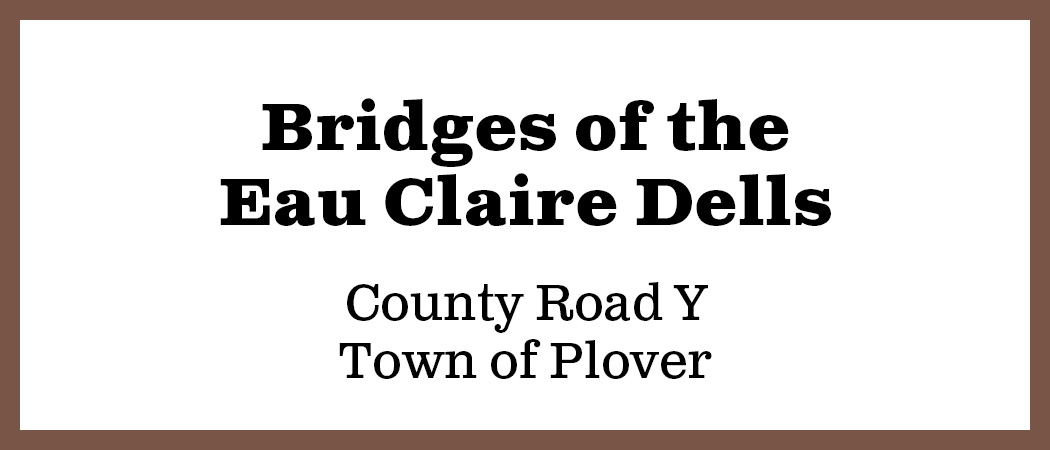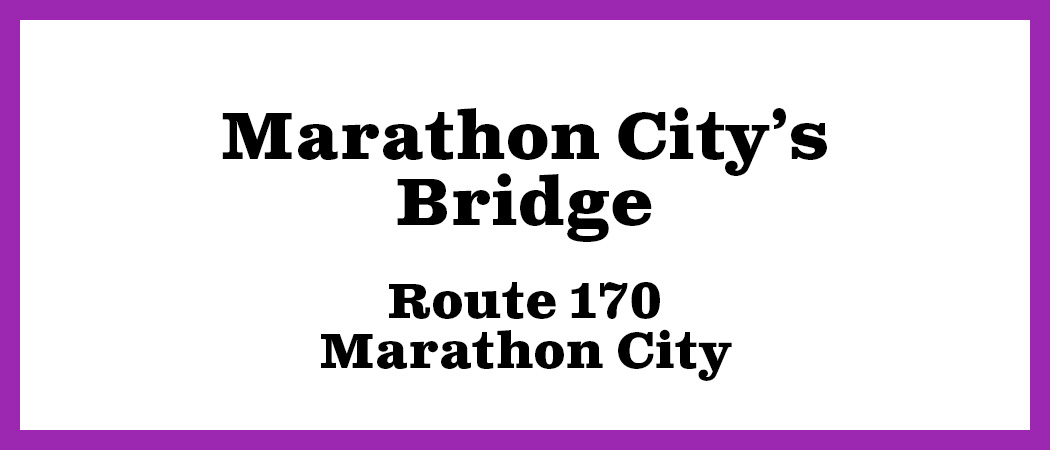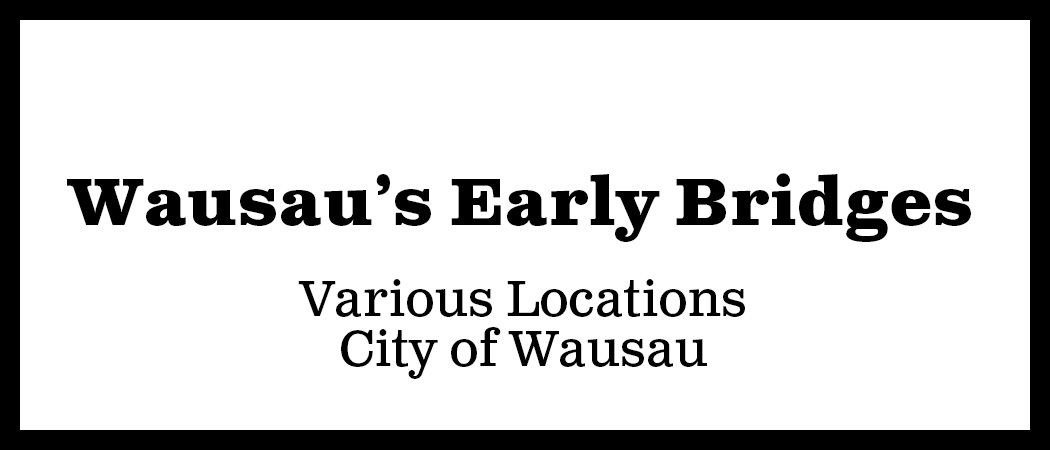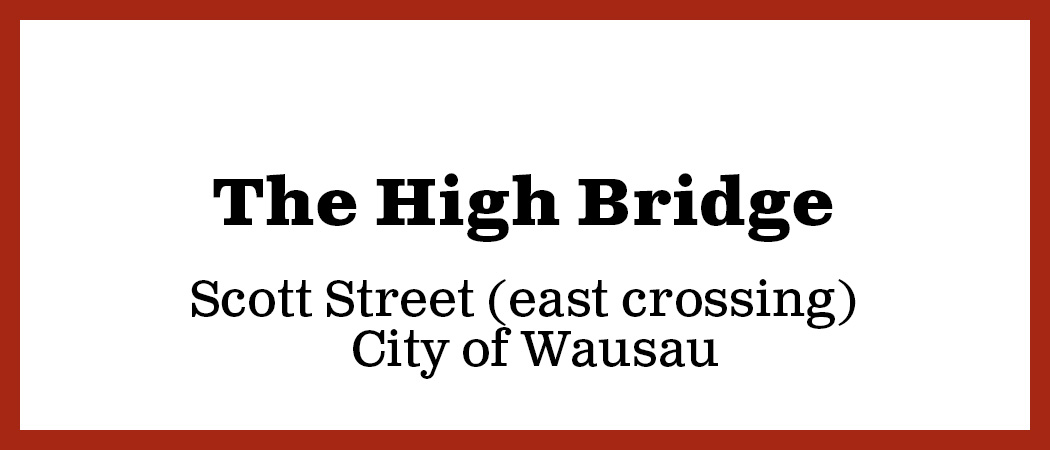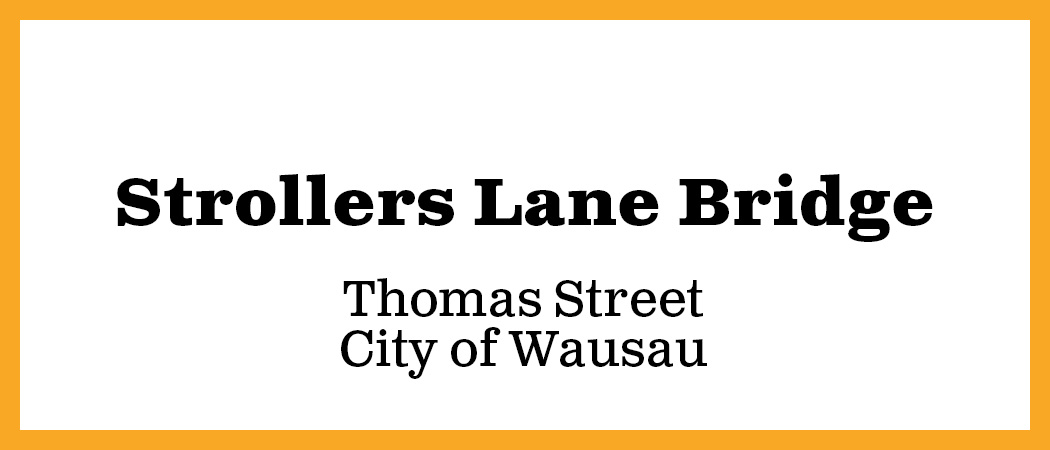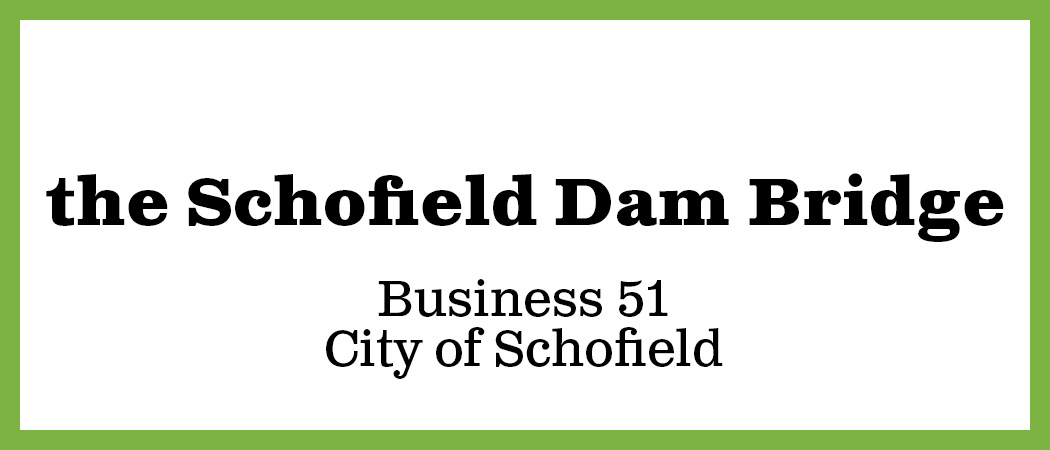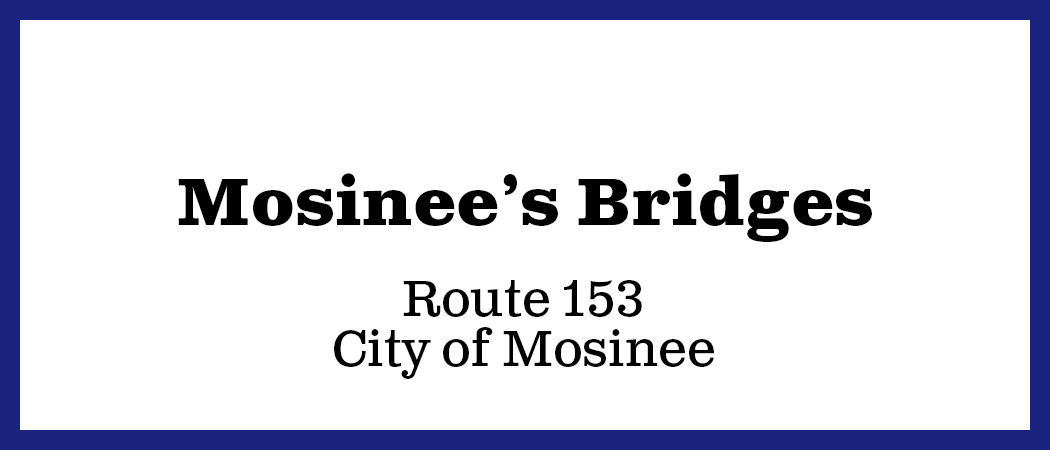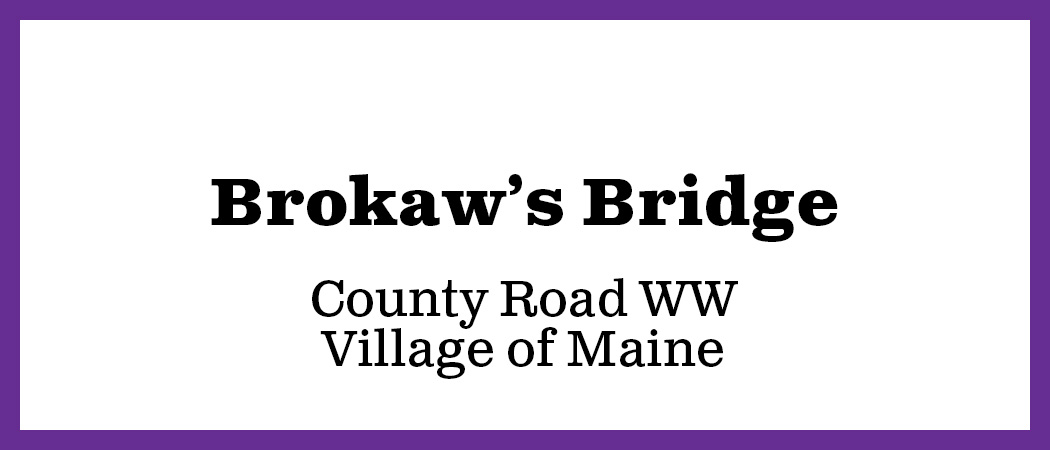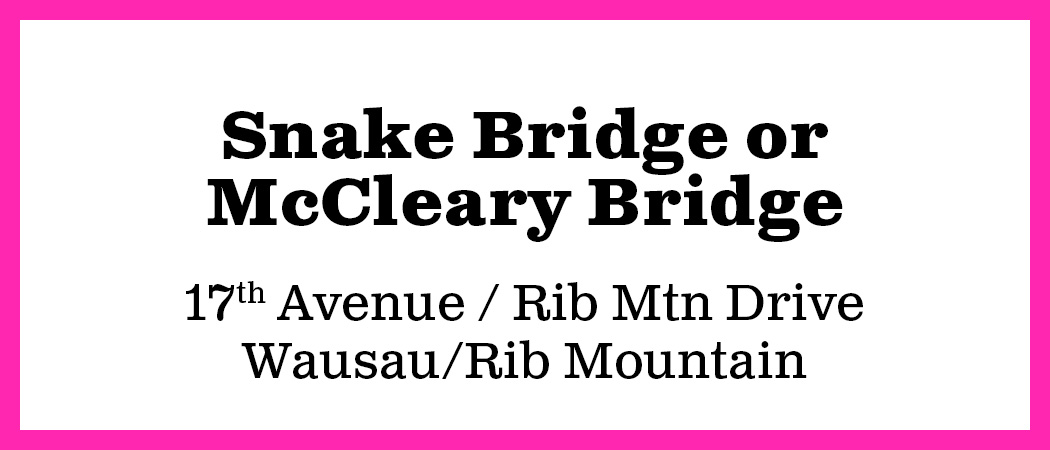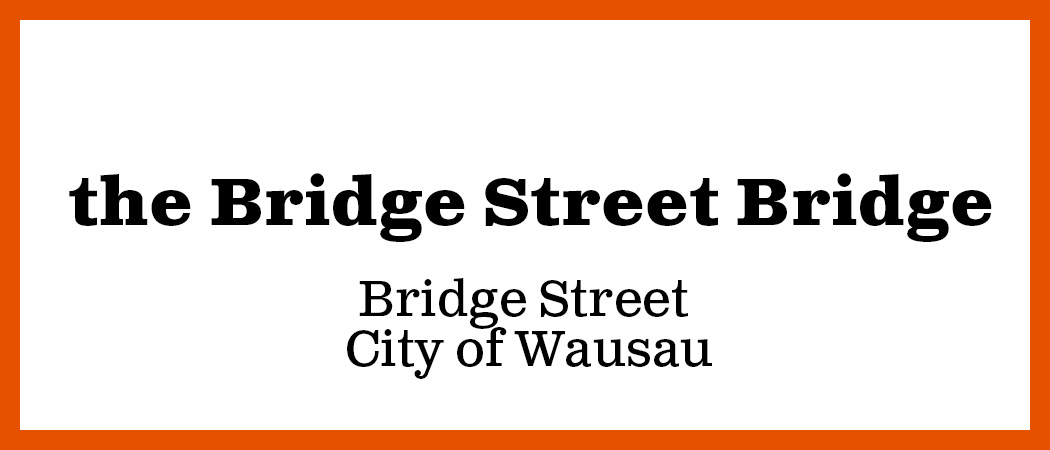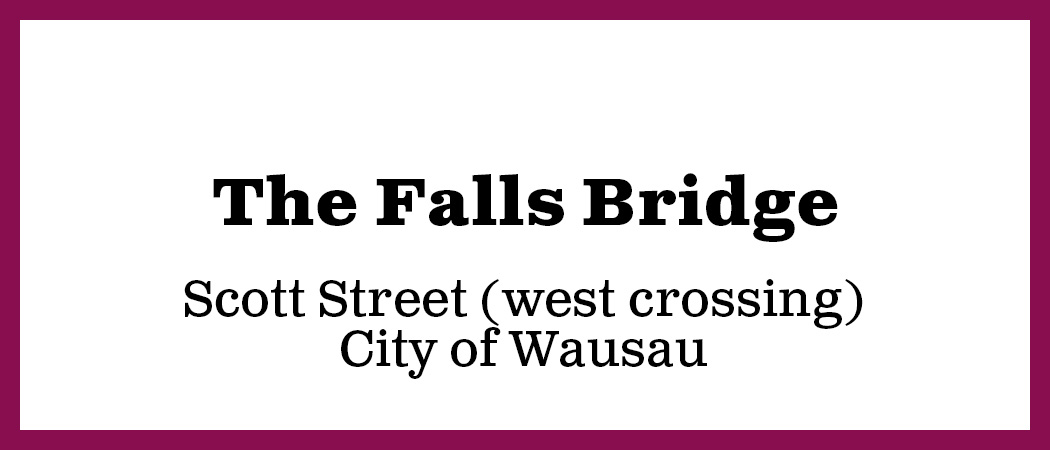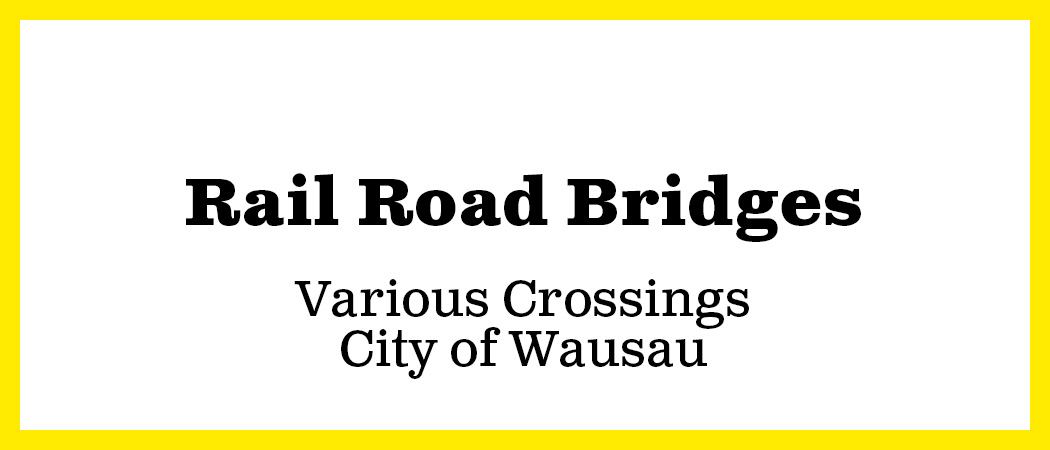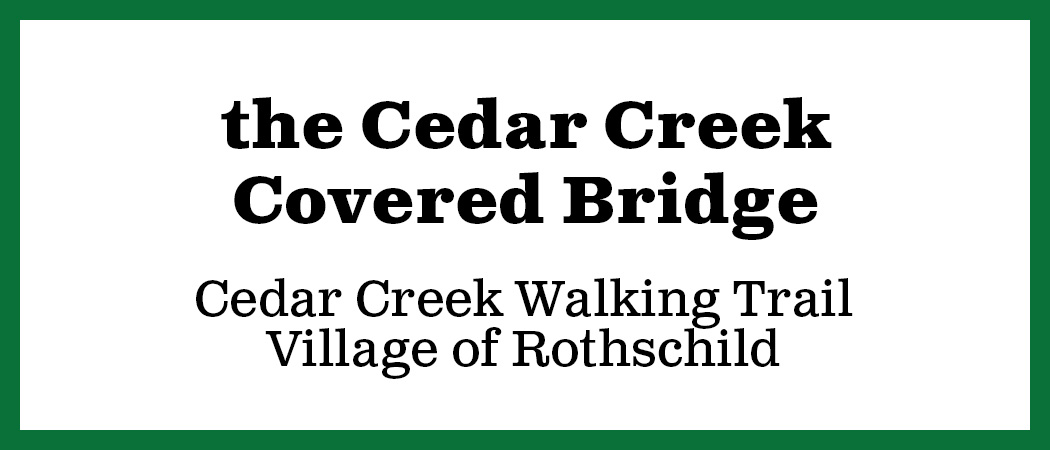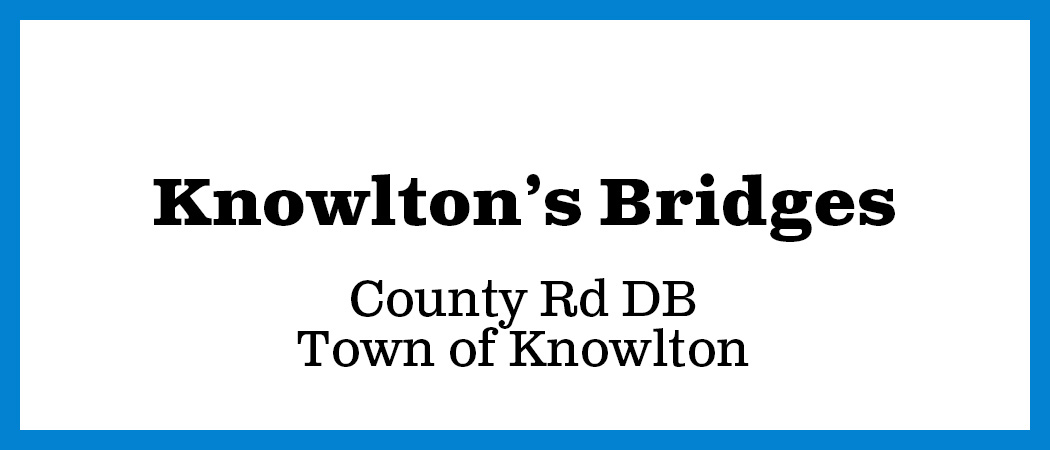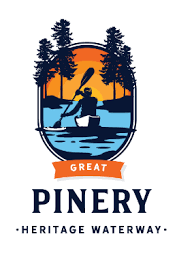Crossing
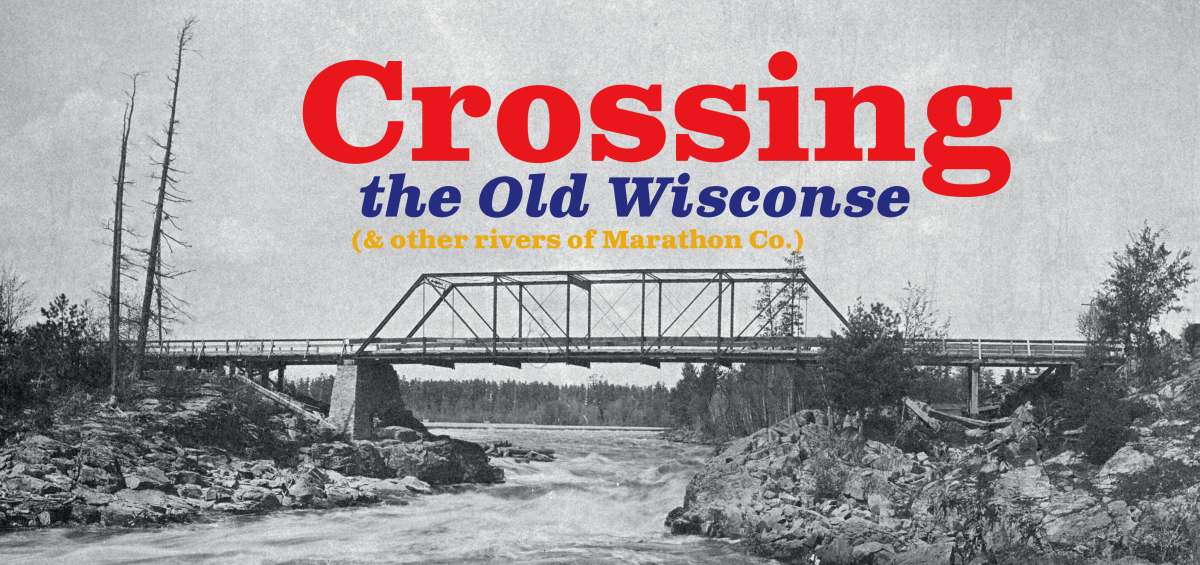
That Old Wisconse
But then, she’s still the Old Wisconse, an’ still she’s
dear to me;
I love her for the long years past; for what she used
to be;
An’ now I s’pose she’s worth the more, with all her
towns an’ mills;
The whistles mean more business than the wild birds’
sweetest trills.
But I can’t help rememb’rin’ how she looked long
years ago,
When through the untouched timber was the path
she used to flow,
An’ ‘taint no use a talkin’, them there was the days
for me—
The Old Wisconse won’t never seem the crick she
used to be.-The final lines of the poem "The Old Wisconse" by William Ellis (1899)
Among the pioneers of the Great Pinery who had spent their lives living, traveling, and working on the river; an affectionate and familiar name for the Wisconsin River was common, "The Wisconse." These folks had come to know first-hand, both the natural beauty and the great power of the Wisconsin River. But by the end of the 1800s, the Wisconsin River and it's tributaries were going through considerable changes, and the old timers of Central Wisconsin felt a need to clarify the passing of the river they once knew as seperate from the River as it was becoming, and so began to adopt with reverence and wistful nostalgia, the name the "Old Wisconse."
Although once the rivers had been the main (and sometimes only) means of transportation in the region, by the twentieth century, almost no one was using canoes and rafts when there were roads of rail and asphalt. The trains and automobiles had taken over the tasks of moving not only people, but also the lumber and goods produced here, which would no longer be floated down the river to mill and market as they once did. The considerable waterpower of the river was more and more being harnessed--not by the wheels of the saw and grist mills, but instead by the new dams being built to produce electricity. The river was even calmer and less destructive than it used to be, thanks to the building of new dams and the adoption of ways to manage of the river network--which reduced the number and severity of floods and erosion that one were a frequent problem.
With the changes to the river and its use, the name "the Old Wisconse" came to signify the river as it had once been. And one important development that pushed us to cross from the older conception of the Old Wisconse to the modern Wisconsin River we know today, is the building of bridges.
Crossing
The bridges did not by themselves transform the Old Wisconse into the New Wisconsin River, but those changes would have been much more difficult without the building of new bridges. In many parts of the river in the mid 1800s, early bridges of some sort had been built to allow people to cross. But in order to accommodate the sprawl of growing communities and to provide platforms onto which the trains and autos could travel, new bridges were built in and in between the places of Marathon County .
Bridges don't just allow the crossing from one side of a waterway to another, they represent the communities who build, maintain, and use them. And so by focusing on our County's bridges, this exhibit seeks to tell the story of our communities and the waterways themselves. And so in Crossing the Old Wisconse we hope to bring to greater life these stories of the bridges of Marathon County, the waterways they were built to overcome, and the communities that built, maintained, and used them.
The Bridges
The Bridges
A Glossary of Bridge Terminology
Bridge design and construction can sometimes be full of complicated terminology and jargon. If you come across a bridge-related term that you don't know, take a look at this handy glossary of bridge terms.
The Great Pinery Heritage Waterway
This online exhibit on the history was created as part of (and with the generous sponsorship from) the Great Pinery Heritage Waterway project.
Back in turn of the twentieth century, many pioneers of the Great Pinery lamented the changes to the way we saw the "Wisconse." As trains and later automobiles replaced the river as a way of travel, the speed at which they carried people along and past the river also seemed to deprive us of the chance to appreciate the natural beauty and splendor of the river. For better or worse, the our bridges have only made it easier to cross our waterways, and harder to truely appreciate the rivers as they are.
We may not be able to go back and experience the Old Wisconse known to generations long past. But today, you can (and should) still explore the beauty of the County's wonderful waterways by traveling along the trails of the Great Pinery Heritage Wateway. To find out more about the project, and to start paddling the waterways of Marathon County (and beyond) go visit the main website for the GPHW .
Exhibit Credits:
Research and writing by Erick Konop
Design and supervision by Ben Clark
Special thanks to:
Martina Fuller
Alison Coady
Anna & Joe Straub
D. Scott Peterson
Bob Becker
Tom Mortenson
The Marathon City Heritage Center
The Marathon County Highway Department

